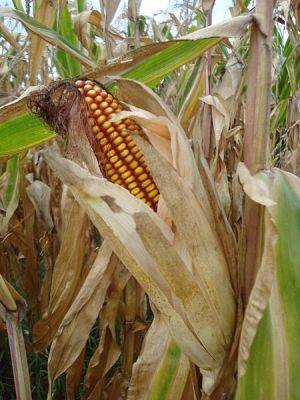 After a short hiatus, bits and bobs is back, this week with four things you may not have known about America’s largest crop, just in time for the Urbana Sweetcorn Festival. So while you’re adding to your average yearly consumption of 25 pounds of corn, keep some of these facts in mind.
After a short hiatus, bits and bobs is back, this week with four things you may not have known about America’s largest crop, just in time for the Urbana Sweetcorn Festival. So while you’re adding to your average yearly consumption of 25 pounds of corn, keep some of these facts in mind.
1. There are only 5 genes separating a weedy grass from delicious maize. Corn has been at the center of much of our discoveries in and understanding of evolution and genetics. Approximately 10,000 years ago, maize suddenly appeared in New World agriculture, yet no wild specimens resembling corn could be found. What was corn’s ancestor? In the 1930s, a scientist named George Beadle discovered that a weedy grass called teosinte could easily create hybrids with modern maize (he later was awarded the Nobel Prize for physiology and medicine in 1958 for his work in genetics). He calculated that approximately 5 genes separated teosinte from maize. Modern techniques looking for differences in teosinte and modern maize have found these same 5 regions of the genome (although it is difficult to differentiate single genes from a suite of genes in one area). A few small tweaks to these gene regions change a weedy grass with multiple stalks into a grass with a single stalk, broad leaves, and large, well-developed ears with big, juicy kernels. A wonderful overview of corn’s evolutionary history can be found here.
2. Corn has a complicated sex life. Take a close look at the cob of sweetcorn you are about to eat. If you have ever shucked corn by hand, you know the pain of trying to separate all the corn silk from the cob. In fact, it seems there is silk connected to each kernel. This is actually true! Kernels are embryos resulting from a successfully fertilized ovary. Sweetcorn has approximately 10 days during which fertilization occurs. The tassels at the very top of the stalk are the male parts, producing pollen. At this time, corn silk can be seen bunching up at the top of the developing ears. Corn is not pollinated by animals but instead by wind. As wind knocks the pollen out of the tassels at the top, it falls down onto the silk. Once pollen lands on corn silk, the silk begins developing a tube leading into the ovary in the cob. The trip down the tube can take 12–24 hours. Once the pollen reaches the ovary, a corn kernel is born! Ever get a corn cob that is missing kernels? This is a result of poor pollination, where only some of the ovaries were pollinated.
3. Studies of corn revealed the existence of “jumping genes”. Have you ever seen corn with kernels of all different colors? What about one kernel with multiple colors? In the early 1930s, Barbara McClintock, at the time a graduate student at Cornell University, was studying genetics in maize. As mentioned earlier, maize is a great system for studying genetics because each kernel can be thought of as a separate individual. Through experimentation with multi-colored kernels, McClintock found that some genes were able to shift throughout the genome. These became known as “transposable elements”, and were a radical idea when at the time genes were thought to be static and unchanging. McClintock was awarded a Nobel Prize in 1983 for her work, which has profoundly impacted modern genetics.
4. Corn silk has medicinal properties. Corn silk, which we learned above is the pathway for pollen to the ovary, has been used as a medicine for centuries. Corn silk contains vitamin K, which can aid in blood clotting, and has multiple diuretic properties. This makes it very useful for bladder infections, kidney stones, and other urinary tract diseases. So go forth and eat some corn!








